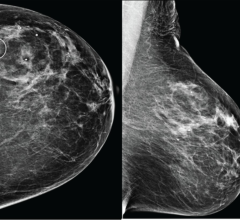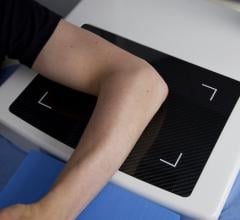
February 26, 2016 — When a child needs repeated X-rays, exposure to radiation is always a concern for parents. A new study at Hospital for Special Surgery (HSS) finds that a relatively new imaging system known as EOS, which provides less radiation exposure, performed as well as conventional computed tomography (CT) scans in assessing limb length.
A difference in leg length is a common condition treated by orthopedic surgeons. A child may be born with it, or it may be the result of infection, an injury or related to another disease.
“Many children with a limb length discrepancy require frequent imaging tests to monitor growth and alignment, to plan for future treatments and to determine the effectiveness of treatments rendered,” said Emily Dodwell, M.D., MPH, principal investigator of the study, which was published in the January issue of the Journal of Pediatric Orthopaedics. “Accurate and reliable measurements are essential to recommend and conduct appropriate surgical interventions at the optimal time”
Dodwell, a pediatric orthopedic surgeon at HSS, noted that when choosing an imaging modality to assess injury, deformity or alignment, clinicians must balance the need for accurate measurements with the need to minimize radiation. This concept, known as ALARA (as low as reasonably achievable), is particularly important in children who may be as much as 10 times more sensitive to radiation than adults.
“Computed tomography or conventional scanograms are the current gold standard for measuring limb-length discrepancy. However, the use of low-dose EOS is being used more frequently in pediatric orthopedics,” Dodwell said. “The goal of our study was to determine the accuracy and reliability of EOS compared with CT scanogram for measurement of leg length and the direct measure of growth about the growth plate,” she said.
Previous studies have shown that the radiation dose from EOS is considerably lower than standard X-rays or CT scans.
For their study, investigators implanted orthopedic markers in the form of tiny tantalum beads into a bone model. (The study did not involve actual patients). Tantalum beads, which can be seen on X-rays and are biocompatible, have been used for several decades after joint replacement surgery to assess implant position and wear.
Investigators obtained images using CT scanogram and the EOS system. Measurements of total length of the bone model and distance between beaded pairs were recorded. The results indicated that EOS measurements showed near-perfect correlation to those of the CT scanogram.
The study authors also noted that with EOS, a patient could be in a standing, weight-bearing position, allowing for better assessment of limb alignment compared to CT in which the patient is lying down.
“The greatest benefit of using these tantalum markers with EOS may be in monitoring growth following injury or surgery to the growth plate,” Dodwell said. “Further investigations are necessary to determine whether this measurement technique will be of significant clinical utility.”
For more information: www.journals.lww.com/pedorthopaedics


 December 03, 2025
December 03, 2025 









